Effective Strategies to Keep Wasps Away from Your Space
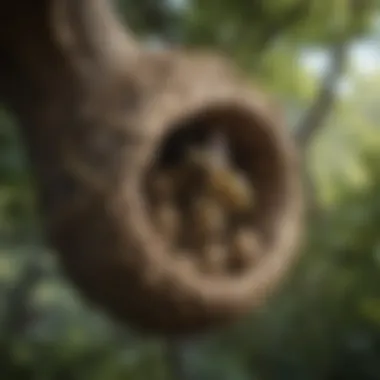

Intro
Dealing with wasps can be a frustrating experience for anyone who values their outdoor space. These insects, while beneficial in certain ecological aspects, can quickly become a nuisance when they invade gardens, patios, or event spaces. Understanding wasp behavior is essential to developing effective strategies for keeping them at bay. This guide provides insights into both natural and chemical deterrents, along with maintenance practices to help create a wasp-free environment.
Preventing wasps from taking over your area requires a combination of knowledge, planning, and action. It’s not just about eliminating existing wasps but also implementing measures to deter new ones from establishing themselves. Homeowners, gardening enthusiasts, and event organizers can all benefit from a proactive approach. The next sections will outline key strategies and tips to ensure your outdoor experience is uninterrupted.
Understanding Wasp Behavior
Before diving into prevention methods, it's important to grasp the behavior and habits of wasps. Wasps are social insects that often build nests in concealed areas. They can be aggressive when defending their nests, making it vital to avoid direct confrontation. Understanding their nesting habits helps you identify potential nesting sites around your property.
Wasps typically search for food to sustain their colonies, primarily nectar, fruits, and protein sources. Sweet foods and drinks tend to attract them. This knowledge makes it easier to alter your outdoor activities to dissuade them from lurking around.
Preventative Measures
Preventing wasps from invading your space is not only about reacting to their presence but also proactive steps to discourage them. Here are some effective strategies:
- Remove Food Sources: Keep outdoor dining areas clean. Promptly clean up spills and keep food sealed during outdoor gatherings. Dispose of garbage properly and use tightly-fitting lids.
- Seal Entry Points: Investigate your home for cracks or gaps that may serve as entry points. Use caulk or insulation to seal these areas, preventing wasps from nesting within your home's structure.
- Use Natural Deterrents: Certain plants, like mint and lemongrass, act as natural repellents. Planting these around your garden can help keep wasps at a distance.
- Commercial Traps: Invest in wasp traps that attract and contain these pests. Position them away from high-traffic areas to divert attention from people and pets.
Chemical Deterrents
In some cases, natural options may not suffice. Chemical deterrents can offer a more aggressive means of keeping wasps at bay. Common choices include:
- Insect Sprays: Use sprays specifically designed to target wasps. Ensure you follow the usage instructions carefully for best results. Apply these in the early morning or late evening when wasps are less active.
- Wasp Baits: Commercially available wasp baits can attract and kill wasps. Place these baits strategically around your property to reduce the population effectively.
"Understanding the lifecycle of wasps enables effective intervention strategies."
Maintenance Practices
Maintaining a wasp-free environment is an ongoing effort. Regular inspections of your outdoor spaces allow you to identify potential nesting sites early.
- Periodic Checks: Conduct thorough checks of potential nesting sites, such as eaves, tree branches, and hidden corners throughout the summer months.
- Garden Upkeep: Keep gardens tidy by trimming overgrown plants and removing any rotting fruits that may attract wasps. Regular upkeep discourages nesting.
- Community Awareness: If you live in a neighborhood, consider discussing wasp control strategies with your neighbors. Unified efforts can greatly reduce wasp presence in the area.
By implementing these strategies, you can foster an outdoor space that remains enjoyable and peaceful, free from intrusions by wasps.
Culmination
Keeping wasps at bay is not merely about removing them when they appear; rather, it is an intricate blend of preventing their arrival and managing their presence. Knowledge about their behavior, combined with effective preventative measures, can significantly enhance your outdoor experiences. Through consistent maintenance and employing both natural and chemical deterrents, you can create a harmonious environment for yourself and your guests.
Understanding Wasp Behavior
Understanding wasp behavior is crucial for anyone looking to reduce their interactions with these insects. Wasps often invade spaces that provide them with food, shelter, or nesting opportunities. Knowledge of their habits helps in adopting strategies to keep them away from homes, gardens, and events. This section highlights the key aspects of wasp behavior, emphasizing the importance of awareness in effective prevention.
Types of Wasps
There are several types of wasps that homeowners and outdoor enthusiasts may encounter. The most common include:
- Yellowjackets: Known for their black and yellow coloration, these wasps are often aggressive and attracted to food sources, especially sugary substances.
- Paper Wasps: These wasps construct umbrella-shaped nests and are less aggressive than yellowjackets. They are important pollinators but can still be a nuisance.
- Bald-Faced Hornets: Despite their name, they are a type of wasp. They build large paper nests and are known for their defensive behavior when approached.
Each type has distinct behaviors and preferences. Paying attention to these differences is vital for applying effective deterrent strategies.
Nesting Habits
Wasps prefer to establish their nests in secluded areas that offer safety and protection. They often choose:
- Under eaves: Gaps and sheltered areas around homes are frequent nesting spots.
- Tree branches: Many wasps build nests in trees, often high above reach.
- Ground: Some species, like yellowjackets, create nests underground.
Understanding where these nests commonly form allows for proactive measures. Early detection and removal of nests can prevent larger infestations later on.
Feeding Patterns
Wasps have varied diets based on the season and their species. Their feeding habits can influence when they are most active and likely to invade your space. Typically, wasps are:
- Carnivorous during summer: They hunt insects to feed their larvae.
- Attracted to sugary foods in late summer and fall: As natural food sources dwindle, they seek out human food like fruits, sodas, and other sweet items.
By recognizing these feeding patterns, individuals can take steps to minimize food exposure, thus reducing the chances of attracting wasps.
Identifying Wasp Attractants
Understanding what attracts wasps to your environment is crucial for effective prevention. By recognizing these attractants, you can take targeted actions. Eliminating or mitigating these factors can significantly reduce the likelihood of a wasp infestation in your space. Awareness of these key elements lays the groundwork for creating a more comfortable outdoor area.
Food Sources
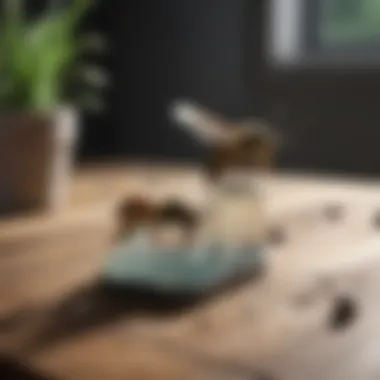
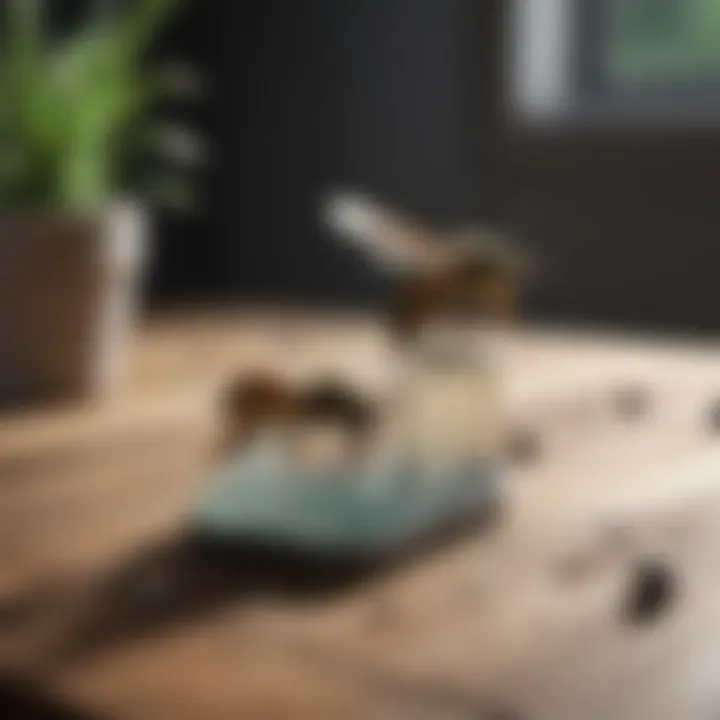
Wasps are primarily attracted to protein and sugar. They often seek out meat, fruit, and sweet foods. Common food sources include open trash bins, picnic leftovers, and unsealed containers of sugary drinks. Keeping these sources covered or properly disposed of is essential. Here are some tips to consider:
- Seal trash bins: Ensure that garbage cans have tight-fitting lids.
- Store food properly: Keep food indoors or securely closed when outside.
- Monitor outdoor eating areas: Clean up spills and food crumbs immediately after eating.
By taking these steps to manage food sources, you can discourage wasps from straying into your area.
Sweet Scents
Apart from food sources, wasps are drawn to sweet scents. This can include fragrances from perfumes or candles, as well as natural plant scents. Even the sugary fragrances of ripe fruits can attract them. Here are some points to keep in mind:
- Avoid strong scents: When hosting an outdoor gathering, opt for unscented products.
- Cover ripe fruits: If you have fruit trees, check regularly and cover any fallen fruit.
- Be cautious with floral arrangements: Arrange any flowers away from common gathering areas.
Creating a less appealing environment reduces the chances of attracting wasps to your space.
Convenient Nesting Sites
Wasps build nests in sheltered locations, so identifying these potential nesting sites around your home can help in prevention. Common spots include eaves, attics, shrubs, and under decks. Here are some considerations:
- Inspect your property: Look for areas that are dark and sheltered.
- Seal openings: Close any cracks or gaps in the exterior of the home to limit potential nesting sites.
- Trim shrubs and trees: Keep plants well-maintained to reduce potential shelters for nests.
By recognizing and managing these nesting opportunities, you take a proactive stance against wasp establishments.
Preventative Measures
Preventative measures are crucial in controlling wasp populations and minimizing encounters with these insects. Understanding and implementing effective strategies can protect both your outdoor spaces and your well-being. Prevention often means taking proactive steps rather than reactive measures after an infestation occurs. By reducing opportunities for wasps to nest and feed, you can create an environment that discourages their presence.
Designing Wasp-Resistant Outdoor Spaces
Creating a wasp-resistant outdoor space starts with making informed design choices. Layout plays a significant role in deterring wasps. Ideally, avoid structures or landscaping elements that provide shelter, such as dense shrubs or abandoned buildings, which may attract them. Open spaces are less inviting for wasps, so consider using furniture and décor that do not offer hiding spots.
Additionally, materials matter. Using hard surfaces like stone or brick in garden setups limits the places where wasps can build nests. You should consider keeping certain areas free of clutter. Regularly maintaining your garden and outdoor areas prevents wasps from finding conducive nesting opportunities.
Securing Food and Waste
Securing food and waste is vital in reducing the likelihood of wasps invading your space. Wasps are often attracted to food sources, particularly sugary items and protein-rich substances. When hosting outdoor gatherings, ensure that food is kept covered. After meals, promptly clean up spills and dispose of waste in tightly sealed trash cans. Recyclable containers should also have a secure lid, as these too can attract wasps.
Tip: Use trash cans that are designed to keep pests out. Some models are specifically built to minimize access for insects.
Make a habit of checking your outdoor spaces frequently. Ensure that no food waste is lingering, especially during peak wasp season. This diligence can go a long way in minimizing their presence.
Choosing Appropriate Planting Options
The selection of plants you incorporate into your outdoor spaces can influence the likelihood of attracting wasps. Certain plants, such as mint, marigolds, and basil, can deter wasps naturally. Not only do these plants add aesthetic value to your garden, but they also provide an extra layer of protection.
Conversely, consider avoiding flowering plants that are attractive to wasps, like fruit trees and flowering herbs. These can draw wasps closer to your living areas, increasing the chance of an encounter. When landscaping, think about creating a variety of zones that encourage beneficial insects while keeping wasps at bay.
A balance of defensive planting strategies can significantly enhance your efforts in maintaining a wasp-free environment.
Natural Deterrents
Natural deterrents play a crucial role in keeping wasps at bay. They provide homeowners with effective, eco-friendly options that avoid the risks associated with chemical pesticides. Not only do these methods contribute to a healthier environment, but they also respect the natural order of ecosystems by not killing wasps indiscriminately. Understanding how to leverage natural repellents can greatly reduce wasp activity without negative side effects for beneficial insects.
Essential Oils as Repellents
Essential oils have been noted for their effectiveness against various pests, including wasps. Oils such as peppermint, clove, and lemongrass possess natural properties that wasps find repulsive. Applying diluted essential oils around potential nesting sites or along entry points can deter them from invading an area.
To create a simple mixture, combine about 15 drops of your chosen essential oil with water in a spray bottle. Shake well before each use. Regular application is necessary for best results, particularly during early summer when wasps start their nests.
Plant-Based Solutions
Certain plants naturally repel wasps. For instance, marigolds, basil, and mint are not only pleasant to have in gardens but also can help in deterrent strategies. Planting these species around outdoor seating areas or entrances may discourage wasps. Furthermore, maintaining a diverse set of plants can naturally disrupt wasp attraction by providing more than just single food sources.
Consider integrating these plants into your landscaping designs. They can enhance your garden’s aesthetics while providing dual functionality.
Creating DIY Deterrent Sprays
DIY deterrent sprays offer a practical way to utilize common household products against wasps. A simple recipe involves mixing water, sugar, vinegar, and dish soap. The sugar and vinegar attract the wasps, while the soap interferes with their ability to escape.
Here's how to create an effective DIY spray:
- Mix 1 cup of vinegar, 1 cup of water, and 2 tablespoons of dish soap in a spray bottle.
- Shake gently and spray onto areas where wasps are a concern.
This solution can be used in conjunction with other measures for layered defense against wasp invasions.

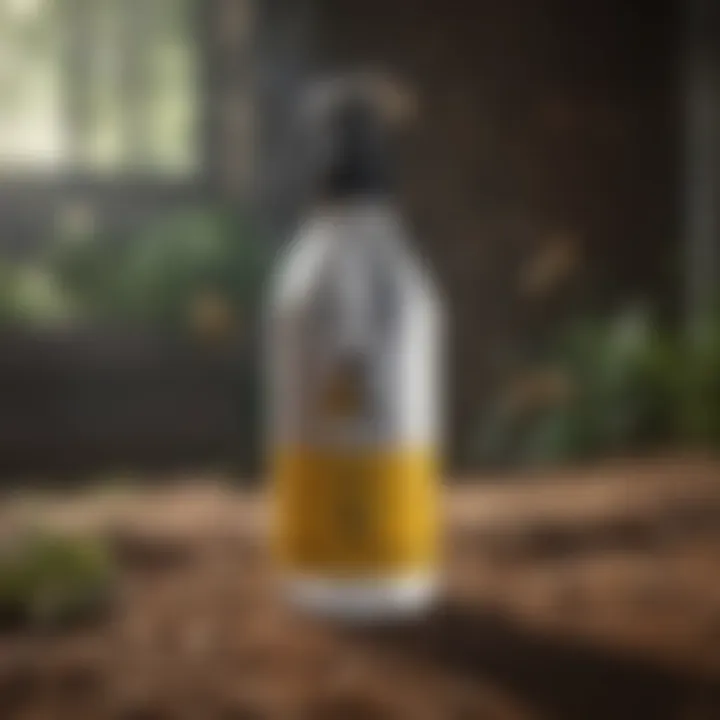
Regular application is advisable, especially before and during summer months when wasp populations peak. Keep in mind this spray is more of a control method rather than a complete deterrent.
Implementing these natural deterrents can significantly reduce wasp presence. Making smarter choices in landscaping and utilizing household items can create a more enjoyable outdoor experience.
Chemical Options
Chemical options represent a potent tool in the arsenal against wasps. They offer quick and effective means to manage infestations. Understanding their role allows homeowners to make informed decisions, balancing efficacy with safety. This section delves into the types of insecticides available, application best practices, and critical considerations for using chemicals.
Insecticides and Their Efficacy
Insecticides are chemical substances designed to kill insects, including wasps. Their effectiveness can vary widely based on formulation, target species, and application method. Common types of insecticides for managing wasps include pyrethroids and neonicotinoids. Pyrethroids act on the nervous system of insects, leading to rapid paralysis and death. Neonicotinoids affect nerve pathways, proving lethal to wasps as well.
Effective use of insecticides requires proper identification of the wasp species. Different species may respond differently to the same chemical, so selecting the right insecticide is crucial.
Homeowners can find both broadcast sprays and targeted spot treatments. Each offers unique benefits; for example, broadcast sprays cover larger areas, while spot treatments focus on specific nests. Timing matters too; applying insecticides during the evening or early morning is most effective when wasps are less active.
Safe Application Practices
Applying insecticides safely is paramount for both human health and environmental protection. Firstly, read and follow label instructions carefully. This includes proper mixing, recommended distances, and protective equipment.
To ensure safety:
- Wear gloves and protective eyewear during application.
- Avoid windy days to prevent drift from the targeted area.
- Ensure that children and pets are kept away during and after the application process.
Once the insecticides are applied, observe the area for any adverse reactions, not just in wasps but also in nearby wildlife.
Considerations for Chemical Use
While chemical solutions can be effective, several important considerations must be weighed before proceeding. The potential impact on beneficial insects is worth noting, as broad-spectrum insecticides may unintentionally harm pollinators and natural predators of other pests.
Moreover, environmental contamination is a significant concern. Consider the local ecosystem and potential runoff into water sources when choosing to use chemicals. This is especially critical if you are in a community with strict regulations regarding pesticide use.
Lastly, if chemical options seem too overwhelming or if the infestation is extensive, consulting with a professional pest control service may provide peace of mind and efficiency.
Wasp Traps
Wasp traps play a critical role in managing and controlling wasp populations around homes and gardens. Specifically, they help trap and reduce the number of wasps, limiting their chance of interacting with humans. To maintain a safe environment, understanding the various types of traps, DIY methods, and commercial options is necessary.
Types of Wasp Traps
There are primarily two types of wasp traps: bait traps and decoy traps.
- Bait Traps: These traps use a food attractant to lure wasps in. Common attractants include sugary liquids like soda, fruit juice, or commercial bait solutions. Once the wasp enters, it is typically unable to escape. Bait traps are effective during peak wasp activity seasons.
- Decoy Traps: These traps mimic the appearance of a wasp nest. Wasps are territorial creatures and may avoid areas they perceive to be occupied by other wasps. Placing a decoy nest can deter them from establishing a nest nearby.
Different models serve varying functions. Some traps can be hung from branches, while others can stand on surfaces. The choice depends on specific needs and area size.
DIY Wasp Trap Techniques
Creating an effective DIY wasp trap can save money and can be tailored to personal preferences. An easy-to-make trap involves common household items. Here’s a simple method:
- Take a plastic bottle and cut it in half.
- In the bottom half, add some water and sugar to create a sweet bait.
- Flip the top half upside down and insert it into the bottom half, forming a funnel.
- Set the trap in areas where wasps are often seen.
This design reduces chances of escape while enticing wasps with a familiar scent. Other variations include using vinegar, fruit scraps, or meat as bait. Just remember to check and change the bait regularly to maintain efficacy.
Commercial Traps and Their Use
Commercial wasp traps come in various styles and effectiveness levels. They are readily available at gardening stores or online marketplaces. Some notable brands include Rescue! Wasp Trap and Terro Wasp Trap. These traps typically have more advanced designs, offering better durability and effectiveness compared to DIY solutions.
When using commercial traps, it's essential to follow the manufacturer's instructions for placement and baiting. Many traps are designed to capture multiple species of wasps, making them versatile.
Considerations:
- Time of year: Early in the spring, traps should be placed before wasps become active.
- Location: Position traps away from high-traffic areas, particularly food sources, to lure wasps away from where people gather.
Integrating traps into a comprehensive wasp control strategy can enhance effectiveness. Regular maintenance, such as checking and emptying traps, ensures they perform well throughout the season.
Regular Maintenance Practices
Regular maintenance practices are an essential component in the fight against wasps. They ensure a proactive approach, minimizing the chances of infestations. Homeowners benefit from these practices as they help maintain a comfortable outdoor environment. Consistent vigilance and care lead to fewer confrontations with these insects, enhancing both safety and peace of mind.
Inspections for Nesting Sites
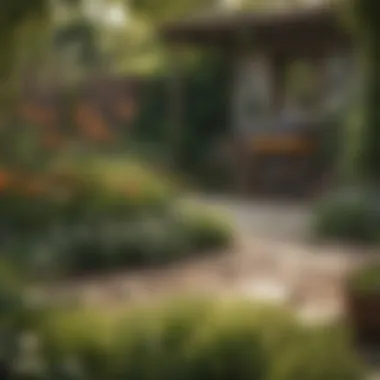
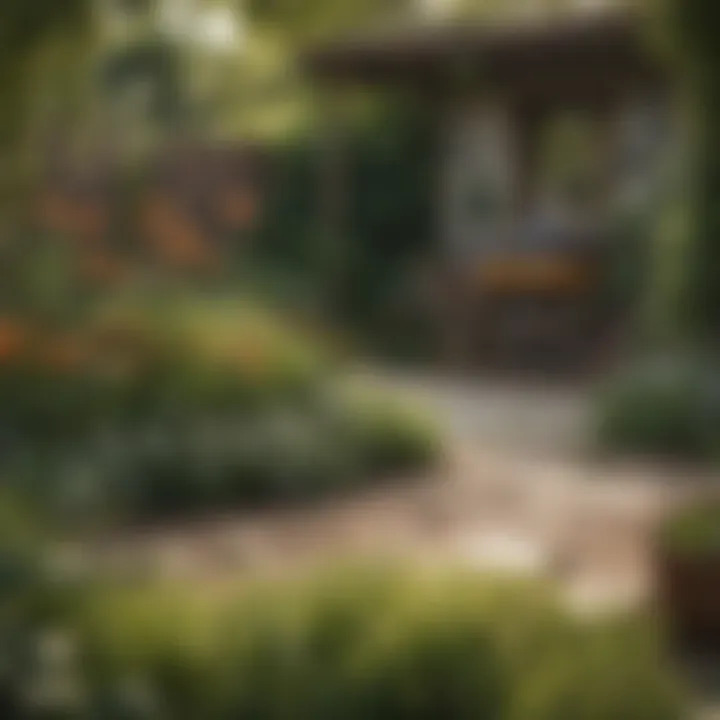
Routine inspections for nesting sites are vital. Wasps often build nests in hidden or elevated areas around homes. Common locations include eaves, attics, and trees. Conducting thorough inspections can identify nests before they become problematic. It is advisable to carry out these checks in the late afternoon or evening, when wasps are less active.
During inspections, look for the following signs:
- Visible nests: These can vary in size and shape. Some are small, while others can be quite large.
- Brown or yellow paper-like material: This indicates the presence of a nest, as wasps often use wood fibers to construct their homes.
- Increased wasp activity: A noticeable increase in wasp presence around your property signals nearby nests.
Addressing any found nests promptly is critical to preventing future infestations.
Seasonal Cleanup Tasks
Seasonal cleanup tasks play a significant role in wasp prevention. After each season, particularly autumn, it is essential to clean up outdoor spaces thoroughly. This includes removing any leftover food sources, fallen fruits, or trash that could attract wasps.
Some key tasks include:
- Clearing debris: Leaves, branches, and other debris provide excellent hiding spots for nests.
- Cleaning outdoor eating areas: Ensure that tables and picnic spots are free of crumbs and spills.
- Trimming overgrown vegetation: This reduces potential nesting sites and limits access to your home.
Maintaining cleanliness can deter wasps from making your home their own.
Monitoring Wasp Activity
Monitoring wasp activity is important for ongoing maintenance. Observing changes in wasp behavior can indicate the need for further action. Regularly check outdoor areas where activity is noted, such as patios and gardens.
Keep an eye out for:
- Wasp nests on your property: If you find new or growing nests, they should be addressed immediately.
- Signs of increasing numbers: A sudden rise in wasp numbers may indicate a nearby nest.
- Daily activity cycles: Wasps are generally most active late in the afternoon. This knowledge helps in planning inspections.
Keeping a log of wasp activity can help identify patterns and inform maintenance efforts effectively.
Regular maintenance helps prevent wasps from becoming a nuisance, promoting a healthier outdoor space for all.
When to Seek Professional Help
Sometimes, despite best efforts, wasp infestations can exceed individual capabilities. Understanding when to involve professionals can save time, effort and ensure safety.
Identifying Severe Infestations
One of the first signs that a wasp problem is beyond DIY solutions is the size and activity level of the nest. Nests can vary greatly in size; a few wasps buzzing around may seem manageable, but larger colonies produce several hundred to thousands of individuals. Here are some indicators to assess your situation:
- Nest Location: If the nest is in a hard-to-reach area, such as eaves, attics or tree branches, professional assistance might be more suitable.
- High Activity Levels: Noticeable increases in activity around a specific area can signal a larger problem, especially if they are aggressive near human interaction.
- Multiple Nests: Finding multiple nests indicates a substantial presence that can swiftly become overwhelming.
Assessing Personal Risks
Personal safety is paramount when dealing with wasps. Severe infestations can pose risks especially for individuals prone to allergic reactions. Consider these aspects:
- Known Allergies: If you have a history of insect sting allergies, it is critical to avoid handling the situation personally.
- Number of Individuals Around: In a busy area with children or pets, a wasp infestation risks bites or stings, necessitating the need for expert intervention.
- Behavioral Observations: Noticing aggressive behavior during routine activities can escalate risks and suggest it's time to consult a professional.
Choosing an Exterminator
Engaging a professional exterminator requires careful consideration. It's essential to ensure quality service and effective results. Here are steps to take:
- Research and Reviews: Look for exterminators with solid reputations in your area. Websites like reddit.com can offer local insights.
- Credentials and Experience: Verify their licensing and experience in dealing with wasps specifically. Often, companies that focus on integrated pest management (IPM) address the root cause effectively.
- Get Quotes and Inquiries: Don't hesitate to ask detailed questions about their processes, including potential risks during treatment. A clear understanding fosters trust and peace of mind.
Important: Before choosing an exterminator, it’s key to clarify their strategies to ensure minimal impact on the surrounding environment.
Culmination
In this guide, we have explored important strategies and considerations on how to keep wasps out of our living spaces. The significance of this topic extends beyond mere discomfort; it involves safety, environmental harmony, and the ability to enjoy outdoor experiences without the persistent threat of wasp encounters. Wasps can be beneficial to ecosystems, but their presence around human activities can lead to conflicts.
Successfully managing wasps requires understanding their behavior and habitat. Recognizing attractants and implementing preventative measures has proven to be highly effective. Effective strategies include food management, choosing appropriate plants, and maintaining a clean environment. These are fundamental for avoiding wasp infestations.
Key points from the previous sections focus on natural deterrents, chemical options, and maintenance practices. Through regular evaluations, seasonal clean-up tasks, and monitoring of wasp activity, we can create an environment less hospitable to these insects. Understanding when to seek professional help strengthens our overall approach to wasp control.
The benefits of preventative strategies cannot be overstated. They empower individuals to take control of their outdoor spaces while minimizing risks associated with wasp stings. Such factors contribute to a peaceful outdoor atmosphere, whether it is a family gathering, a garden activity, or any outdoor event.
A well-rounded approach includes an awareness of potential risks balanced with effective deterrents. When integrated, these strategies cultivate a proactive stance on wasp management, ensuring homeowners can focus on enjoying their spaces and reducing unwanted interactions with wasps.
Summarizing Key Points
To consolidate the critical takeaways:
- Understanding wasp behavior and ecology is essential for effective control.
- Identifying and minimizing attractants such as food and nesting options can significantly reduce wasp presence.
- Advancements in natural and chemical deterrents allow for varied approaches to wasp management.
- Regular maintenance and monitoring are necessary to sustain a wasp-free environment.
- Seeking professional help should be considered in cases of severe infestations and personal risk.
Encouraging Preventative Strategies
Implementing preventative strategies is vital to maintaining a wasp-free outdoor area. Homeowners should adopt these practices:
- Regularly inspect outdoor spaces for signs of wasp nests or increased activity.
- Secure all food sources during gatherings or outdoor events by storing them tightly and cleaning up spills promptly.
- Create a less inviting environment by using plants that do not attract wasps.
- Utilize natural repellents composed of essential oils or other plant-based solutions.
- Educate friends and family about safe practices to avoid attracting wasps during outdoor activities.
By actively engaging in these prevention strategies, readers can significantly diminish the likelihood of troublesome wasp encounters and create enjoyable outdoor spaces.



